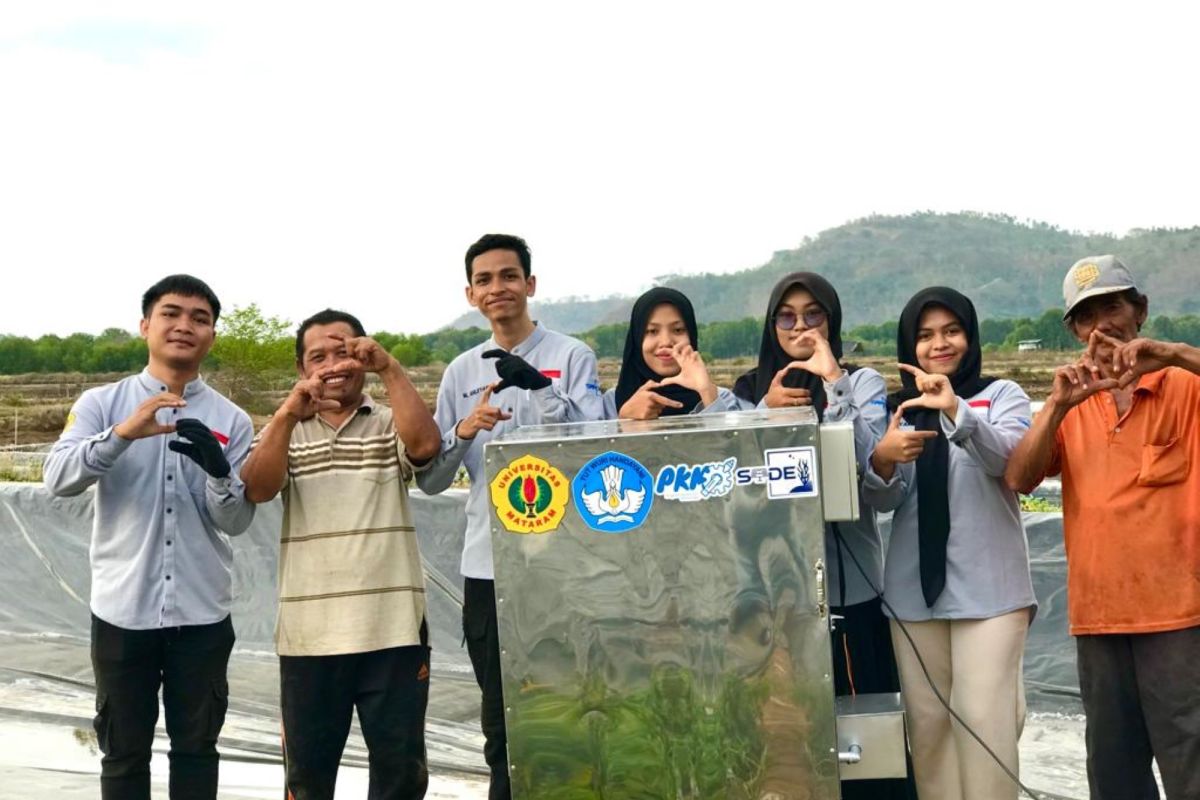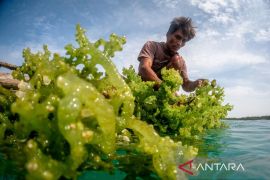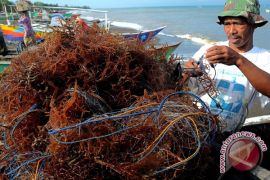"Seaweed holds huge potential for West Nusa Tenggara. We make an effort to contribute to realize the enormous potential by developing a device called SeAweeDryEr (SADE)," SADE team head, M. Ahleyani, remarked.
Ahleyani said he had developed SADE along with four other Unram students by integrating electrical and hybrid heating technology to optimize efforts to dry seaweed.
Four other students from the SADE team are Muhammad Riyadhus Sholihin, Afrianti, Dini Febrianti Lestari, and Qurratul Akyuni.
"This device has a capacity of 12 kilograms and is able to dry seaweed in only six to eight hours," he remarked.
"The length of time needed for drying seaweed by using SADE is much shorter than that of the traditional method that can take five to six days," he stated.
The SADE team members received funding from the Ministry of Education, Culture, Research, and Technology's Student Creativity Program to develop the heating seaweed device, he remarked.
Related news: President asks Fisheries Ministry to downstream seaweed
ANTARA reported earlier that Indonesia's seaweed cultivation area reached at least 12 million hectares. However, only 0.8 percent of the area had been utilized, with a total production of around nine million tons in 2021.
To this end, President Joko Widodo (Jokowi) had urged the Ministry of Marine Affairs and Fisheries to conduct the downstreaming of seaweed products by establishing pilot projects in five regions.
The targeted regions are Buleleng in Bali Province, Wakatobi in Southeast Sulawesi Province, Southeast Maluku in Maluku Province, Rote Ndao in East Nusa Tenggara Province, and West Nusa Tenggara (NTB) Province.
The Marine Affairs and Fisheries Ministry noted that Indonesia’s seaweed export volume had reached 225 thousand tons in 2021, or 30 percent of the total volume of global seaweed exports, thereby making Indonesia the largest seaweed exporter by volume.
The total export value of the commodity during the period was US$345 million, or around Rp5 trillion.
Processed seaweed can be used in both food and non-food industries.
In food manufacturing, several derivative products from seaweed, such as carrageenan, agar, and alginate, are used as food additives in bread, meatballs, nuggets, syrup, ice cream, yogurt, juice, and jelly.
Meanwhile, in the non-food industry, seaweed can be used to make paints, textiles, toothpaste, lotions, face masks, face cream, body scrubs, soaps, and shampoos.
Related news: Government preps for development of 4 seaweed industrialization zones
Related news: Indonesia invites South Korean investment in seaweed cultivation
Translator: Riza F, Rahmad Nasution
Editor: Yuni Arisandy Sinaga
Copyright © ANTARA 2023






